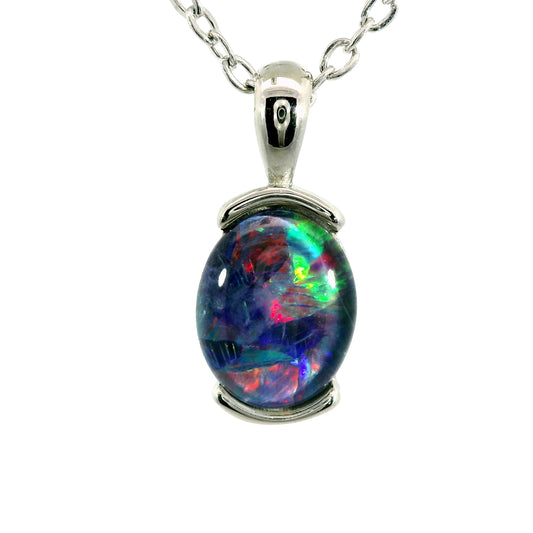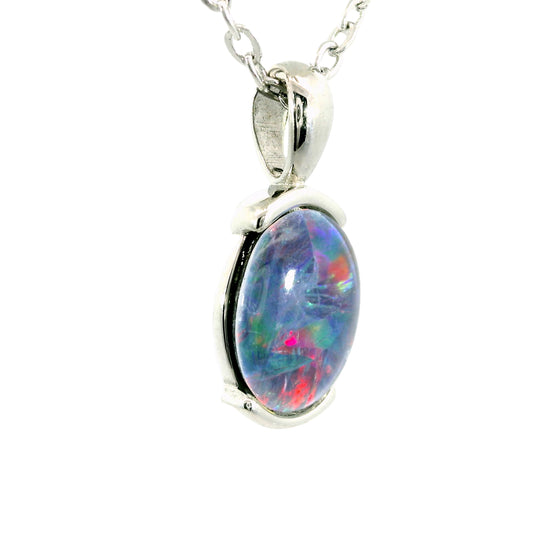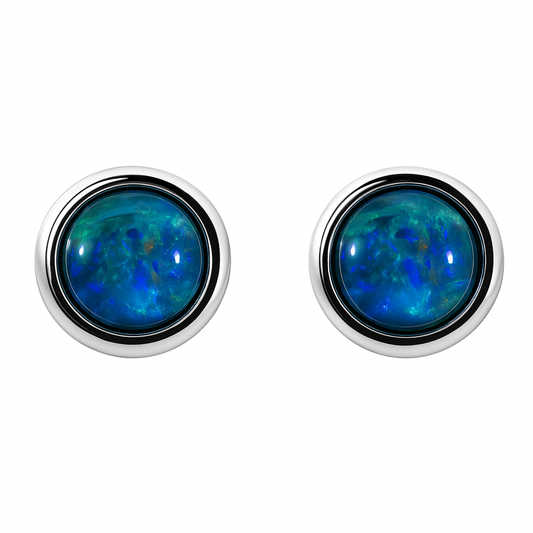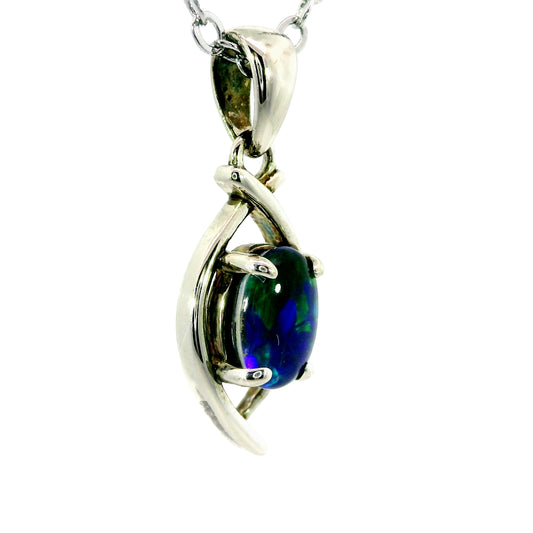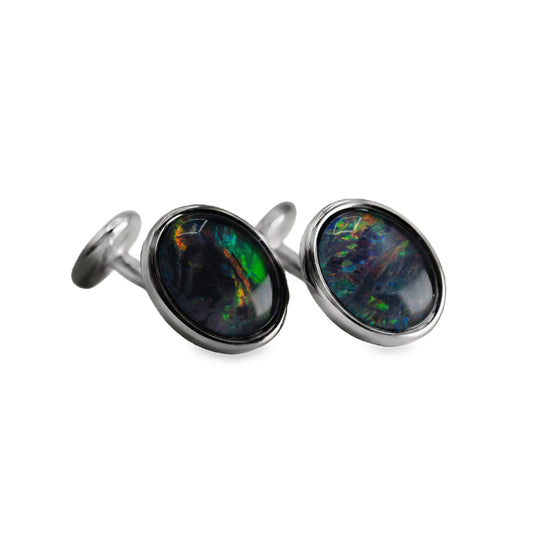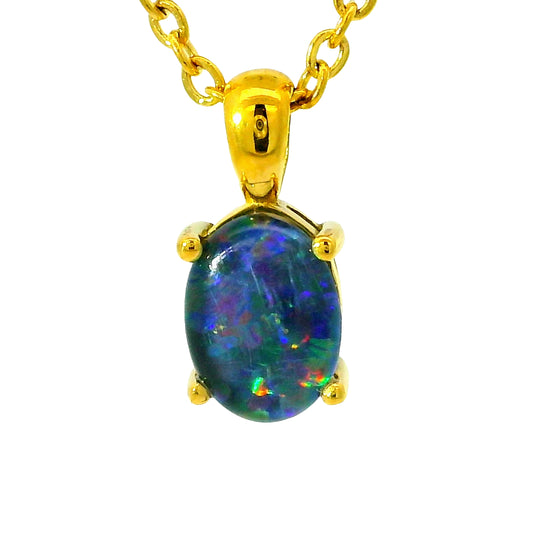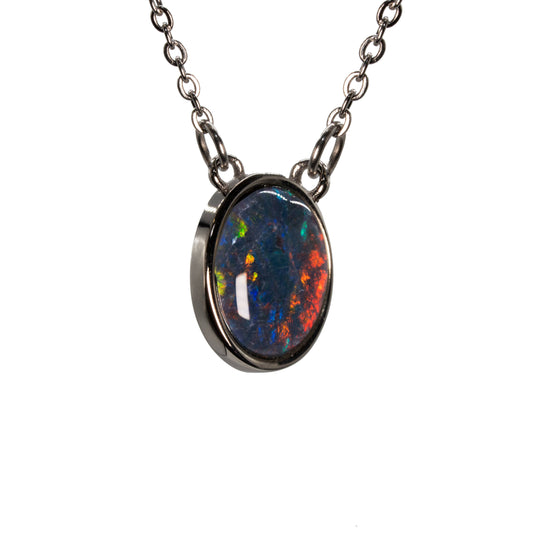Metals Used In YOUR Jewellery
Buying jewellery online can be a wonderful experience, however, there is the lingering notion that the metal used is plated, and therefore will quickly tarnish. In these instances, it may be hard to get a refund, or any particular ‘justice’ for your jewellery. This is why it is important to know what exactly makes a metal ‘high-quality’, and how jewellery marketed as such may not always stay unharmed.
|
“Gold Plated brass, even when the gold plating wears off, is still yellow, and feels nice and heavy, so it can be very misleading…” - Greme Blaiklock, Chairman at Australian Opal Cutters (Sydney) |
The ‘Golden’ Standard
Currently, there is a misleading notion within consumers that gold is always pure, when this is most certainly not the case. One of the biggest problems with online sales is advertising. It is often common to market pieces of jewellery as ‘gold’ when in actuality, it is either gold-plated, or has a high nickel content! Both of these are why such jewellery tarnishes so quickly.
Reputable companies will aim to use a higher quality of gold - often in the form of 18 carat (75% gold) - which will result in the jewellery to keep its colour and shape for longer. However, jewellery is almost always never pure, as pure gold and silver are incredibly soft on their own, and must be strengthened through the use of an alloy.
What Is aAn Alloy, And How Is It Used?
Alloys aren’t inherently bad, and can even be used to improve the jewellery’s quality as a whole. By adding small amounts of alloying elements, certain characteristics of a metal can be improved; this can work to either reduce or increase the strength, hardness, resistance to corrosion, colour, or (thermal and electric) conductivity of a metal.
Alloys aren’t a single metal, rather, a name given to the combination of two or more metallic elements. In the jewellery industry, alloys are used as a cheaper ‘base’ metal; these alloys are used to change specific elements of the jewellery (colour, shape, etc). Brass is a commonly used alloy, and is known for its strength and durability, making it break more easily under pressure, rather stretching. In addition to this, it is incredibly malleable, and is therefore prized for how easy it is to shape into jewellery designs with different intricacies.
Alloys can be useful for metals like gold, as solid gold is too soft for most applications within jewellery, and therefore would break. However, the problem occurs when a company makes an alloy that is composed mainly of a base metal (such as copper, zinc, or tin), with only a small fraction of precious metal; this is what leads to the problem of tarnished jewellery, and creates a severe mistrust between consumers and online stores.
Why Does My Jewellery Tarnish?
‘Tarnish’ is a word given to describe the layer of corrosion that occurs on many types of jewellery. Over time, jewellery that is worn comes into contact with moisture, acid, natural oils, and air. These elements will react with the metal, causing it to wear down and tarnish.
Tarnishing is quite noticeable within cheaper jewellery. Why is that? Often when the alloy within a particular jewellery piece has a high percentage of ‘base’ metals - particularly that of nickel - will react more violently with
The metal copper does oxidise when exposed to the air, or if the metal has nickel then it can turn your skin green. Nickel usually reacts with the acid and sweat in our skin and turns our skin green. If your jewellery is sterling silver, this can also tarnish or patina
What Is Rhodium Plating?
Rhodium is a precious metal that shares similarities to platinum, only it’s more expensive; as an metal, it is incredibly rare, and is often only a by-product of mining other metals. This particular rarity is what affects the price of rhodium, as its availability is not equal to its supply or demand.
Although rhodium is too expensive and brittle to make jewellery from, it does have a use as a plating material. This process of ‘rhodium plating’ (also known as rhodium dip or rhodium flashing) is done through placing the finished jewellery piece into a rhodium solution, where the solution will form a thin layer of rhodium over the pre-existing metal, that will then stay until it wears off (often through the friction that wearing jewellery creates). This process can have many uses, from hiding imperfections, to creating a higher shine to a silver or white gold surface. A main reason for utilising rhodium plating is for providing a protective coating to the jewellery, which aims to protect from scratches; this is done mainly due to rhodium being a harder metal than pure silver and gold, and therefore being able to withstand more damage.
Although it is an amazing procedure, rhodium plating doesn’t work in every instance. Because the layer produced is only thin, through daily usage of the jewellery it will inevitably come off, making replating the piece a necessity. Particular jewellers and companies may offer to re-plate purchased jewellery items. When asking Australian Opal Cutters, a company that offers rhodium re-plating for customers who purchase their jewellery, why rhodium plating was so important, they responded, talking about the differences that metals can have in the process, and overall emphasised how the procedure can be used to make the piece stronger and forward and aesthetic ‘brilliance’.
“Australian Opal Cutters are able to ensure a lifetime of white brilliance through free rhodium plating and our lifetime service guarantee of at-cost servicing. You can send the item to us and we will return it looking spectacular.”
Any Yellow Gold setting in stock can be Rhodium Plated. Rhodium Plating is a lamination of Rhodium around the outside of an existing setting, giving the metal a White sheen and shimmer, effectively identical to – or exceeding - that of White Gold. Rhodium Plating functions as a durable and protective guard against wear and tear – leaving the solid Yellow Gold setting beneath intact and whole. Rhodium Plating is a very expensive means of achieving the same appearance of 18ct White Gold, as producing a setting in solid White Gold includes the costs of labour and the replacement of standard 18ct Gold alloys with the more expensive ‘Palladium’. At Australian Opal Cutters we provide this rhodium plating service at No Charge! Rhodium is a more expensive metal than Palladium. However, less Rhodium is needed in Rhodium Plating than Palladium is needed in White Gold.
If a customer explicitly requires White Gold - advise them of the increased cost of setting in 18ct White Gold as opposed to 18ct Yellow Gold. Run through the make-up process as outlined below.
It is important to note for pieces like rings and necklaces, which come in close contact with the skin, a thicker coating of rhodium may be needed; this isn’t always a good solution, as it will significantly change the colour of the piece, creating a noticeably darker layer than sterling silver, and is not always appealing to customers (although some individuals may prefer a darker finish). Finally, polishing options are available for sterling silver, meaning that a rhodium plating may not be necessary in the first place. It is important that individuals check with their jeweller about what the specific maintenance for their particular piece is, as to not accidentally damage the jewellery.

Hallmarks, Their History And Use
A ‘hallmark’ is a particular mark that is stamped into pieces of jewellery, which indicates the standard of purity; they often are used with the jewellery industry to mark the genuine nature of the metal. Hallmarks have existed for centuries, and are one of Europe's earliest forms of consumer protection.
The english term of ‘hallmark’ can be traced back to King Edward III 1327. The origins of this practise can be linked to a developing standard regarding gold and silver, where it was declared that no piece of silver was to “depart out of the hands of the workers” until it had been marked. This early stage of standards caused silver to be composed of 92.5% sterling, which still remains today. The enforcement of such was carried out by those called ‘Guardians of the Craft’, who went into local blacksmiths to question if workers were abiding by such laws. Within London, these ‘Guardians’ continued to work, eventually forming a Goldsmiths’ Hall; such a name led to the term ‘hallmark’, which is still in use within current society.
“All items being sold as gold, silver, platinum or palladium in the UK must be hallmarked to confirm that they meet the legal standard.” – Birmingham Assay Office
Current jewellery hallmarks are still governed by the Hallmarking Act of 1973, a 39-page legislation that covers items made from precious metal. Although amendments have been made throughout its duration - most of which to accommodate the discovery of new metals and compositions - the legislation overall still remains unchanged. This Hallmarking Act is of great importance, as it gives basic guidelines for jewellers and manufacturers to abide by, and helps deter inferior production. This means, when put simply, the Hallmarking Act is a customer’s guarantee to buying genuine metal and quality jewellery.
The quality and authenticity of gold jewellery can often be misunderstood by consumers, especially when purchasing online. Misleading advertising can result in buyers receiving gold-plated or high-nickel content pieces that tarnish quickly. Understanding the role of alloys in jewellery, recognising the causes of tarnishing, and being aware of practices such as rhodium plating and hallmarking can empower consumers to make informed decisions. Reputable companies prioritise the use of higher quality materials and offer services like rhodium plating to enhance and protect jewellery. Hallmarks provide a historic and ongoing assurance of metal purity and quality. By staying informed and vigilant, consumers can navigate the complexities of jewellery purchasing with greater confidence.












































































































